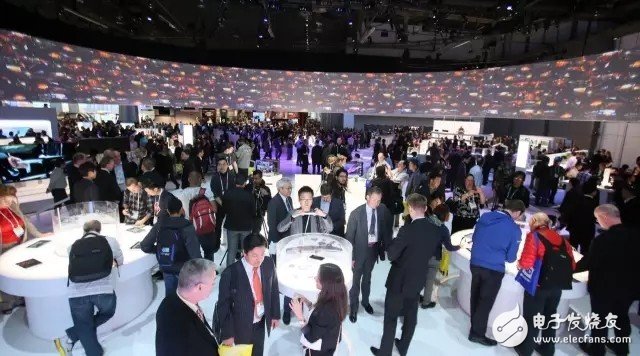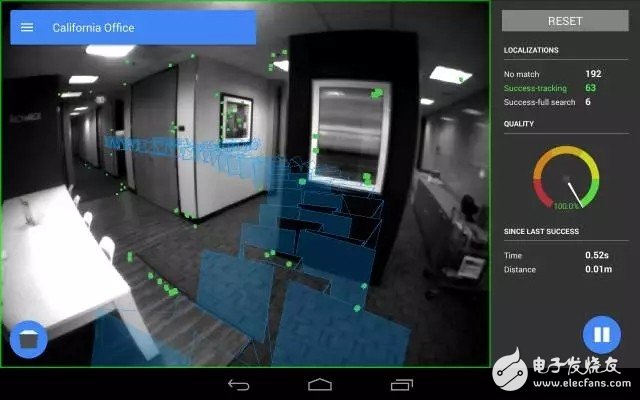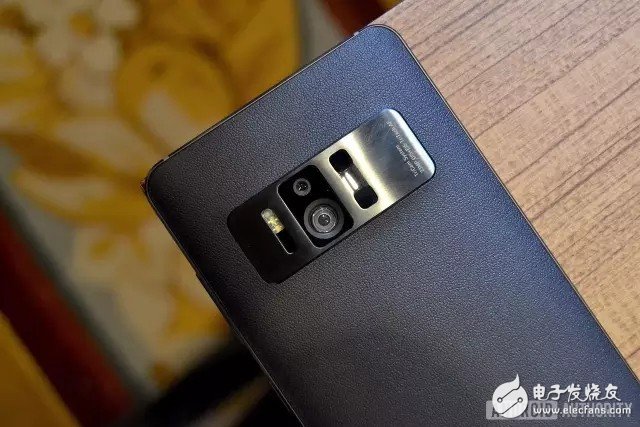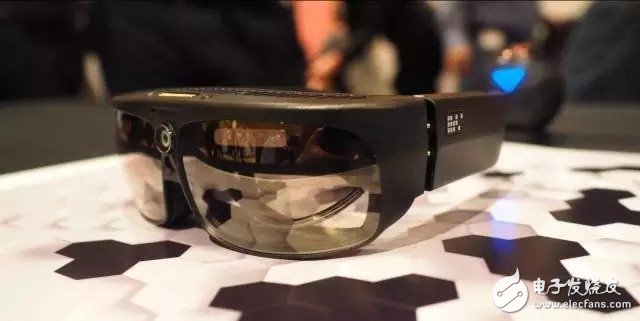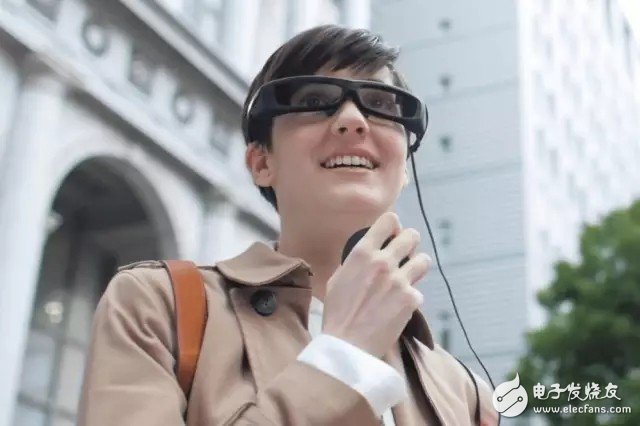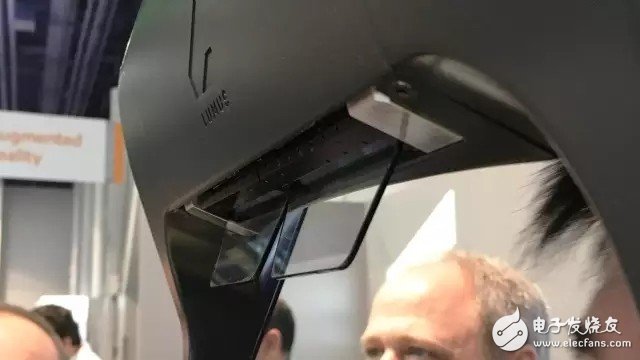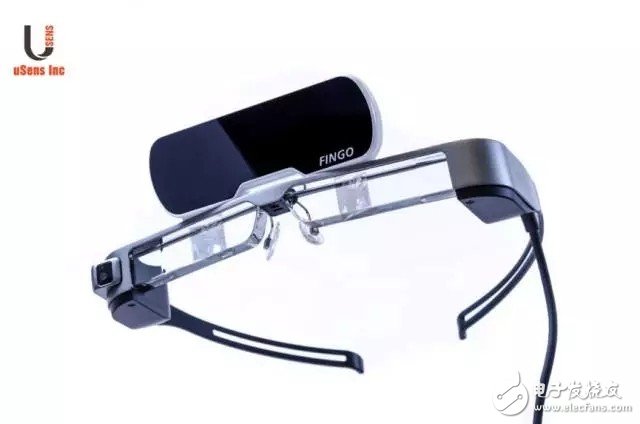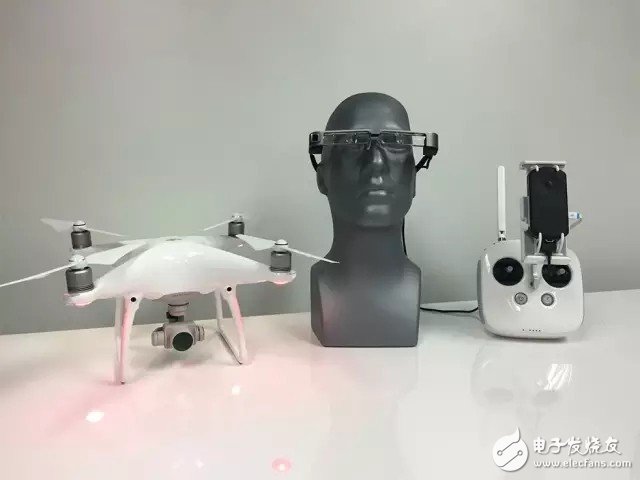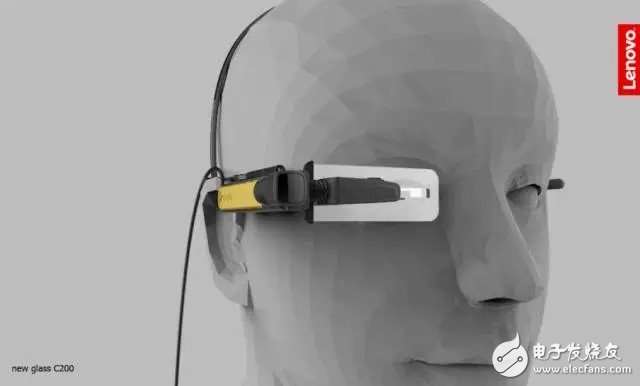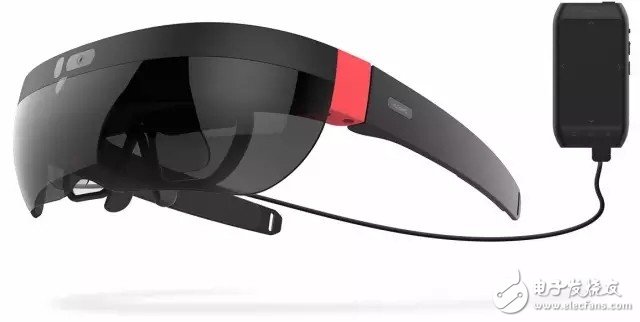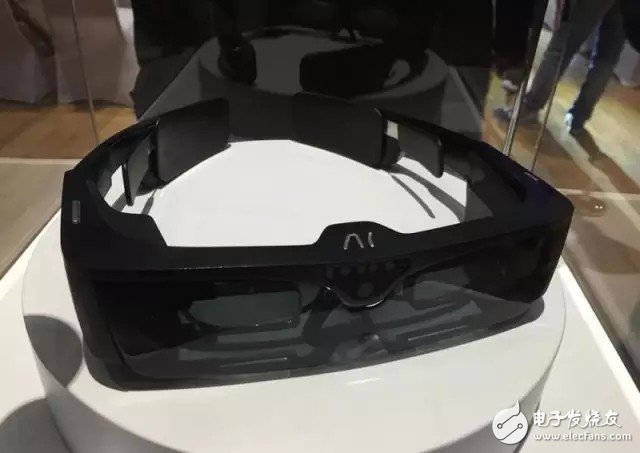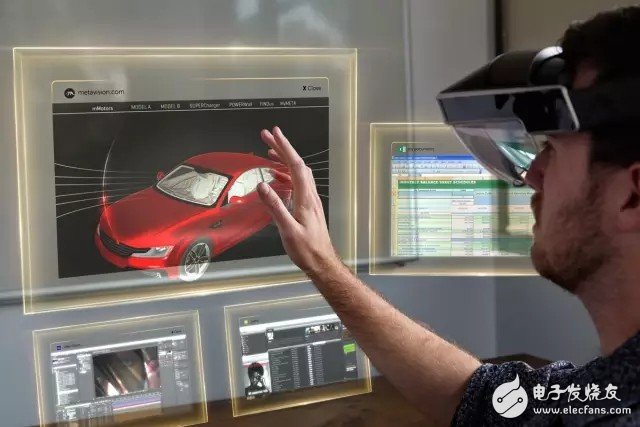This year's VR/AR industry's first exhibition, CES 2017, has already come to an end in Las Vegas, USA. As a high-profile international consumer electronics event, every year, CES is launching new products and showing new products. The stage of technology. This year is no exception. Last year's CES show was robbed of the limelight by VR. Compared with the 2015 exhibition area, the game and virtual reality exhibition area in 2016 increased by 77%. As a relatively mature mobile VR product, Samsung Gear VR is of course equipped with a large number of somatosensory devices. Oculus announced pre-sales information such as the price of the consumer Rift headlights during the show, and exhibited the Oculus Touch controller (although after more than 10 months, this controller really came. In the hands of the player). HTC, another mainstream PC VR head display manufacturer, presented the new HTC Vive Pre at this year's CES show, which is quite close to the current consumer version. Virtuix Omni's VR treadmill booth is also crowded. Of course, indispensable domestic VR equipment manufacturers have attracted a lot of viewers. It can be said that last year's CES exhibition has been completely occupied by VR, and then these devices are constantly "explore friends circle." In comparison, this year's CES show is different. Just after the end of the CES 2017 show, the AR product display space has roughly doubled from 4,500 square feet to 8,500 square feet. On the contrary, VR head-end manufacturers like Oculus and Sony did not show their products here, and even Oculus missed the opportunity to show off. HTC did not launch the much-anticipated Vive 2 generation, but showed off Vive tracker accessories and Vive listening to smart headbands and other accessories. Compared with the sensation caused by last year, it can be said that it is a lot of low-key. Sony also has no VR new product debut. If last year's CES was the world of VR, then this year's CES protagonist is AR. From AR mobile phones to AR glasses, it completely overshadowed the VR's limelight. Next, the VR network Xiaobian for everyone to check out the AR products that appeared during this CES. Through the display of these new products, everyone can also have a new understanding of the trend of the AR hardware industry. First let's talk about AR phones. This new concept should start with Phab 2 Pro, which was launched by Lenovo and Google. The mobile phone is equipped with Google's Tango technology, equipped with special sensors and matching software, can draw 3D models of the surrounding world, such 3D models can be the basis of a variety of applications, such as indoor navigation, space ranging , space scanning, and more. Prior to this CES, only the Moto z modular phone announced that it would support Google Tango technology. Of course, users need to purchase expansion accessories separately. During CES 2017, we saw that this platform has welcomed new members. ASUS announced that it will launch the ZenFone AR phone. As you can see from the name, this is a product that enhances AR functions. The back of the phone has a 23-megapixel main camera, a motion tracking camera and a depth-sensing camera. Detailed regional learning, motion tracking and depth sensing are possible. It is the second mobile phone that integrates Google Tango technology. This is not finished. Huawei also told the media during CES that it will launch mobile phones supporting Tango technology within this year. As a result, there will be more and more members of the AR equipment equipped with Tango technology. According to Google’s introduction of Tango technology, the mobile phone equipped with this technology can be extended with unlimited software usage, whether it is daily use, game or industry application, with its unique sensor combination and algorithm. People have a subversive new perception of AR. After the mobile phone is finished, let's take a look at the AR glasses products during this CES. The first thing to say is, of course, the ODG company that has just received $58 million in Series A financing. This investment is also a blitz for many VR/AR industry companies. In fact, this company was founded in 1999, originally developed for the military to develop wearable devices, and technology is naturally lacking. This time they showed off a new product with the Qualcomm Snapdragon 835 processor, consumer AR glasses R-8 and R-9. Both products have independent computing power. The R-8 has an angle of view of 40°, and the AR image resolution is 720P. It has 64GB of memory, weighs less than 127g, and retails below $1,000. It will be open to developers after the third quarter of 2017. The R-9 is slightly higher in configuration and parameters, with an angle of view of 50° and a resolution of 1080p. The glasses are equipped with a 13 megapixel camera that can be used for tracking and recording 4K of content at 60 frames per second. The R-9 also provides developers with an extension module connector that allows for custom module additions on the glasses based on actual functional needs. As for the price of $ 1,800, the developer version will be released in the second quarter of 2017. However, according to the field media, the two glasses are more like ordinary glasses, but they are not convenient to wear and use. Next, let's take a look at Sony, which is the first to showcase AR glasses. On the eve of CES, Sony just announced its holographic optical waveguide lens assembly. During the CES, the development kit for SmartEyeGlass smart glasses was on display. This product features holographic optical waveguide display technology that overlays text, symbols and simple images into the user's natural field of view. With a total weight of 77g, the glasses bring a lightweight AR experience. Users can continue to use glasses for more than 150 minutes. Also equipped with a CMOS image sensor for 3 megapixel still photos. Support for systems running Android 4.4 or above. Although the hardware configuration is not as bright as ODG, Sony's products are obviously more dominant in the control of the weight of the device. When it comes to AR glasses, there is also a company that has been deeply cultivated in this field, LUMUS. During CES 2017, LUMUS exhibited products that are more suitable for everyday wear. They showed two prototypes of devices called Maximus and Sleek. Among them, Maximus has a 55-degree field of view for gaming or other high-end consumer applications. Sleek's shape is more like ordinary glasses, except that one piece is not the same as ordinary glasses, which is more conducive to daily wear. Lumus' core technology advantage is its research and development of Light-guide OpTIcal Element waveguide, which is the world's leading level. The technical advantage makes the company's booth also crowded. During last year's MWC 2016 show, Epson demonstrated its BT-300 AR glasses, using its own silicided self-illuminating OLED display frequency technology. An SiOLED projector is mounted on each of the left and right sides of the glasses, and the projection effect is bright, the color is full, and the color contrast is relatively high. During the exhibition, it also announced that it has cooperated with uSens to add the gesture interaction module Fingo to the BT-300. By attaching to the BT-300 smart glasses, it can be placed on the top of the glasses or attached to the device by brackets. Consumers can easily implement a natural gesture-free interactive experience without a handle with minimal power and minimal computing power consumption. However, from the appearance, there is still a lot of room for improvement. In addition, Epson also developed the BT-300 Drone EdiTIon AR glasses for $799. The AR glasses are very light and weigh only 69 grams, and the new technology allows you to plan and experience the flight path of the drone with a “God perspectiveâ€. This model's UI is similar to the flying HUD (head-up display), which displays information such as flight time and remaining battery capacity. For drone enthusiasts, you can say a very fresh accessory. After reading these few, let's take a look at what kind of AR products are brought together by domestic manufacturers who are exhibiting at CES. Lenovo exhibited the New Glass C200 aimed at commercial applications during this CES. As an upgraded version of the previous generation C100, the C200 still inherits the design similar to Google Glass. Run by connecting to a computing unit. According to reports, the New Glass C200 was introduced to take advantage of AI and AR. Lenovo's goal is to use smart glasses as a tool for data analysis. Lenovo said the C200 can recognize 20 objects, including various images and architectural drawings. This is because it has built-in AI software called NDB MarTIn. The AI ​​assistant provides information through computer vision, plus a camera, user habits and various sensors, as well as voice, gesture and button controls. Let's take a look at the startup company Xiaolong Technology, which announced in September this year that it has completed a 50 million yuan A+ round of financing, led by BOE, a leading player in the domestic display field. The company has successfully completed three rounds of financing for angels, A and A+ from the establishment of the company for a year, with a valuation of hundreds of millions of yuan. The second generation of binocular intelligent AR glasses Berry released by Nine Dragons Technology adopts a split design, equipped with Qualcomm Snapdragon quad-core processor, dual OLED display, resolution of 2*1024*768, 8 megapixel camera, 3700mAh Large capacity lithium battery, supporting 12 hours of battery life. The angle of view is 35 degrees. At the same time, it supports Android and opens the SDK, equipped with remote assistance system and supports gesture interaction. In addition, the remote assistance system supports real-time two-way voice communication and supports real-time delivery of maintenance manuals such as pictures, texts, and PDFs. The product is said to have reached mass production status. Another representative domestic AR glasses manufacturer, the bright wind platform, brought the latest HiAR Glasses AR glasses products. The product is equipped with Qualcomm Snapdragon 820 processor, 13 million pixel high-definition camera, 4GB dual channel memory. In terms of interaction, HiAR Glasses also has significant highlights. The product has an AR engine that integrates the core technology of self-developed research such as image recognition, object recognition and SLAM. Especially in the gesture interaction, in order to balance the different natural gesture operation scenes indoors and outdoors, and to ensure the use efficiency and portability, Liangfeng station independently designed and developed the world's smallest depth camera module based on its own gesture recognition technology. I was noticed when I held a new product launch conference in Beijing. But the AR glasses have an angle of view of only 30 degrees and a screen resolution of 1024*768. These counts may not be comprehensive, but so many AR glasses products are on display at the CES show, which may explain a new trend: the giants have entered AR, and the entrepreneurial team is based on new technology. Compared with VR helmets, AR glasses equipment is more in line with daily use scenarios. After wearing VR glasses, we are equivalent to being isolated. The AR is different. By superimposing the digital information with the real environment, it can bring some convenience to daily life. Whether it is an AR phone or an AR eyewear, it is closer to everyday life than a VR device. After all, you can't walk around on the road with a huge VR helmet. In terms of the prospects of AR glasses, the actions of the major players also show their optimism about the industry. Apple CEO Cook has repeatedly publicly stated that he is more optimistic about the application prospects of augmented reality, and the AR startup team that Apple has acquired in recent years, applying for the AR technology patent, is suggesting to us that Apple will exert its strength in this field. Perhaps soon we will see Apple from leading the industry trend to launch AR glasses. During the CES exhibition, the participation of Sony, Lenovo, Asus and other manufacturers has further boosted the confidence of the employees in the AR industry. It is true that the current AR glasses products still have many drawbacks, such as narrow field of view, large size, heavy weight, inconvenient to wear and carry, and so on. But these products that appeared during this year's CES have made us shine. We can see that these AR glasses manufacturers, whether they are traditional industry giants or entrepreneurial teams, are actively working on the field of view and portability. The products are getting closer and closer to the glasses that are worn everyday, and the experience is getting closer. The better. Perhaps during the CES show next year, we will usher in a stand-alone AR eyewear device that is truly suitable for everyday wear and has a more complete function and a wider field of view. Although Meta 2 is superior to these AR glasses products in the main parameters, it needs to rely on high-end PCs to run, just like the current PC VR helmets, in a very embarrassing situation. Xiao Bian is still looking forward to better performance of independent AR glasses equipment. In the end, Xiao Bian also thought of the rumor that a certain AR glasses company had collapsed in the past. In combination with the exhibitors during this CES, we can find that the startup company must have its own core technology and the technology-free company will be eliminated sooner or later. Especially after the giants entered the field, there is really not much room left for the startup team. Jiangsu Qilong Electronic Technology Co., Ltd. , https://www.jsqldzkj.com